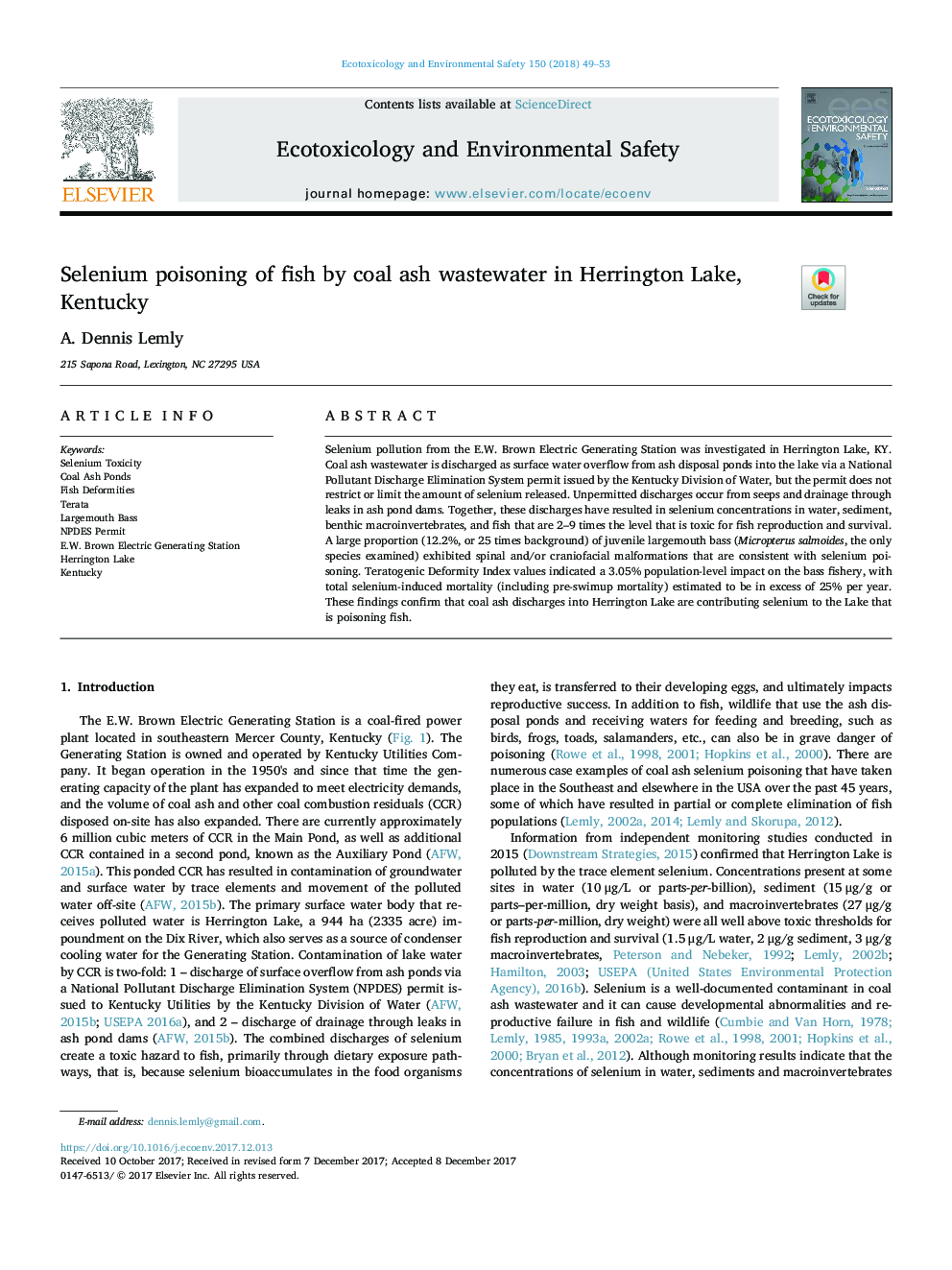| Article ID | Journal | Published Year | Pages | File Type |
|---|---|---|---|---|
| 8854356 | Ecotoxicology and Environmental Safety | 2018 | 5 Pages |
Abstract
Selenium pollution from the E.W. Brown Electric Generating Station was investigated in Herrington Lake, KY. Coal ash wastewater is discharged as surface water overflow from ash disposal ponds into the lake via a National Pollutant Discharge Elimination System permit issued by the Kentucky Division of Water, but the permit does not restrict or limit the amount of selenium released. Unpermitted discharges occur from seeps and drainage through leaks in ash pond dams. Together, these discharges have resulted in selenium concentrations in water, sediment, benthic macroinvertebrates, and fish that are 2-9 times the level that is toxic for fish reproduction and survival. A large proportion (12.2%, or 25 times background) of juvenile largemouth bass (Micropterus salmoides, the only species examined) exhibited spinal and/or craniofacial malformations that are consistent with selenium poisoning. Teratogenic Deformity Index values indicated a 3.05% population-level impact on the bass fishery, with total selenium-induced mortality (including pre-swimup mortality) estimated to be in excess of 25% per year. These findings confirm that coal ash discharges into Herrington Lake are contributing selenium to the Lake that is poisoning fish.
Related Topics
Life Sciences
Environmental Science
Environmental Chemistry
Authors
A. Dennis Lemly,
